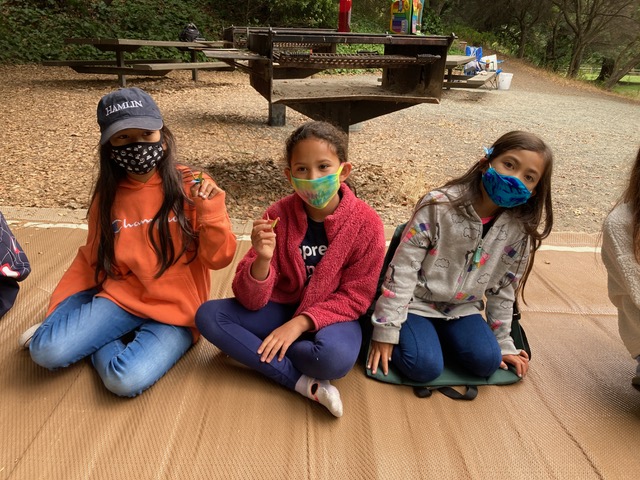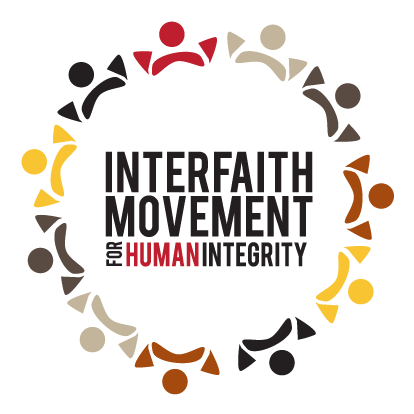Hinabing mga kasaysayan tungkol sa pananampalataya at katarungan
Weaving the stories of faith and justice
Weaving our banig (woven mat)
Filipino American History Month (FAHM) is a time the Filipinx community in the U.S. diaspora lifts up and celebrates our legacy within the U.S., our stories of migration, our stories of contribution to this land. In my role with the Interfaith Movement for Human Integrity, I am blessed to be a weaver of sorts. Inspired by the banigs (woven mats) I often sit on at community picnics, or on the floor of the home of a family in Pampanga, Philippines. We weave together people of faith with those impacted by immigration and incarceration. We weave together movements of immigration justice and ending mass incarceration. We weave together our identities, for me as a Filipinx in diaspora with deep-rooted cultural, faith, and healing traditions, and a legacy of resistance and justice.
This Filipino American History Month, I want to reflect on the stories we don’t often tell, the stories of resistance and resilience within our Filipinx community, stories of our bayan who are impacted by the twin systems of immigration and incarceration, and how our Filipinx cultural and faith traditions guide us to respond.

Ating mga bayan (our people)
Our bayan are among the 1,140 people detained in immigrant detention centers across the state. Estelito Adiova, an immigrant from the Philippines, endured years of separation from his family, and battled a drug addiction. After serving a 32-month prison sentence related to his addiction, he was granted parole, but Estelito was directly transferred into ICE custody where he is currently fighting his deportation to the Philippines and hoping to be reunited with Bay Area family and community. If deported, Estelito would be at grave risk of being targeted given his drug-related conviction. In the Philippines, the epidemic of human rights abuses topping 30,000 people are targeting the poor, activists, people of LGBTQ identity, and anyone who criticizes the authoritarian President Duterte.
Our bayan are also incarcerated at high rates. In California, Filipinos are one of the largest subgroups of Asian American incarcerated adult males. In a ground-breaking survey conducted by the Asian Prisoner Support Committee (APSC), they interviewed 513 Asian Pacific Islanders currently and formerly incarcerated in California prisons. Among Southeast Asians (including Filipinx), they found that 82.9% experienced economic hardship, 80% experienced childhood violence , and 65% joined a gang. Many faced the following difficulties in school: language barriers (48%), bullying (56%), lack of counseling (51%), and extreme poverty (35%).
The report also found that 36% of Southeast Asian respondents had an ICE hold, meaning that when they are found eligible for release from state prison, instead of being reunited with family/community like U.S. citizens would be, they will be directly transferred into ICE custody and face deportation. In California, it is estimated that 80% of interior ICE arrests (not including border arrests) are direct transfers from jails and prisons after being found eligible for release.
Maria Legarda, a community and faith leader, is one of those impacted by both systems. As a young adult, Maria immigrated from the Philippines, and faced many hardships that led to addiction and contributed to her serving 14 years in one of California’s largest women’s prisons. When Maria was found eligible for release, instead of being welcomed home by her community, she was transferred into ICE custody and detained for 11 months. Maria often shares that her faith is what gave her strength to survive these harsh systems. Today Maria is living in the Bay Area, fighting her immigration case so that she can remain with loved ones, and is active in the anti-deportation movement.
Building Beloved Bayanihan (Community)
This Filipino American History Month, let us also celebrate the ways we are replacing these punitive systems with beloved bayanihan, with our community-led organizing, strategies, and collectives of care. With the leadership of directly impacted Filipinx community members and allies, we created a space for us to center these stories, named Kasama ng Kalayaan collective (Together for Freedom).
As one of the founding leaders, Shelly Clements, says, “Mga kaibigan siguro parang wala tayong makaya sa situation na ito pero kong marami tayo siguro mas tayong may maaaring maggawa.” “Friends and family, it may seem that we can’t do anything about this situation, but if we come together, we will find a way to resolve this problem.”
Beloved bayanihan is demonstrated in the story of kasama (friend) “P”, who was detained by ICE in Yuba County Jail for over 4 years after being found eligible for release from prison. With the support of community advocates and lawyers, he was granted release from ICE after demonstrating that the mental health services in Yuba were inadequate. “P” was released into a community of care, where he was housed, provided an opportunity to volunteer, connected to culturally-relevant mental health services, and is now working in a Filipino supermarket immersed in his community.
Filipinx faith leaders are essential to building beloved bayanihan, like Pastor Henry Pablo, currently serving as a United Methodist Church pastor for two congregations in the Central Valley. Pastor Pablo reminds us: “It’s important to explore the intersections of Filipinx identity, of faith identity, because we can truly empower and inform our social work and the way we engage in community with each other… our faith can be a source of resilience and hope, it can also be a source of struggle and solidarity.”
This Filipino American History Month I hope you join me in weaving Filipinx identity and faith, weaving together these stories of resistance, faith, and hope, so that we can all be a part of building beloved bayanihan.

Gala King is a 2nd generation pinay, raised in the midwest by a fierce Bisaya nanay, and Caucasian activist tatay. Currently, Gala resides in Huichin also known as Oakland, California, with her partner and two sons, and works as the Northern California Regional Director for Interfaith Movement for Human Integrity.
